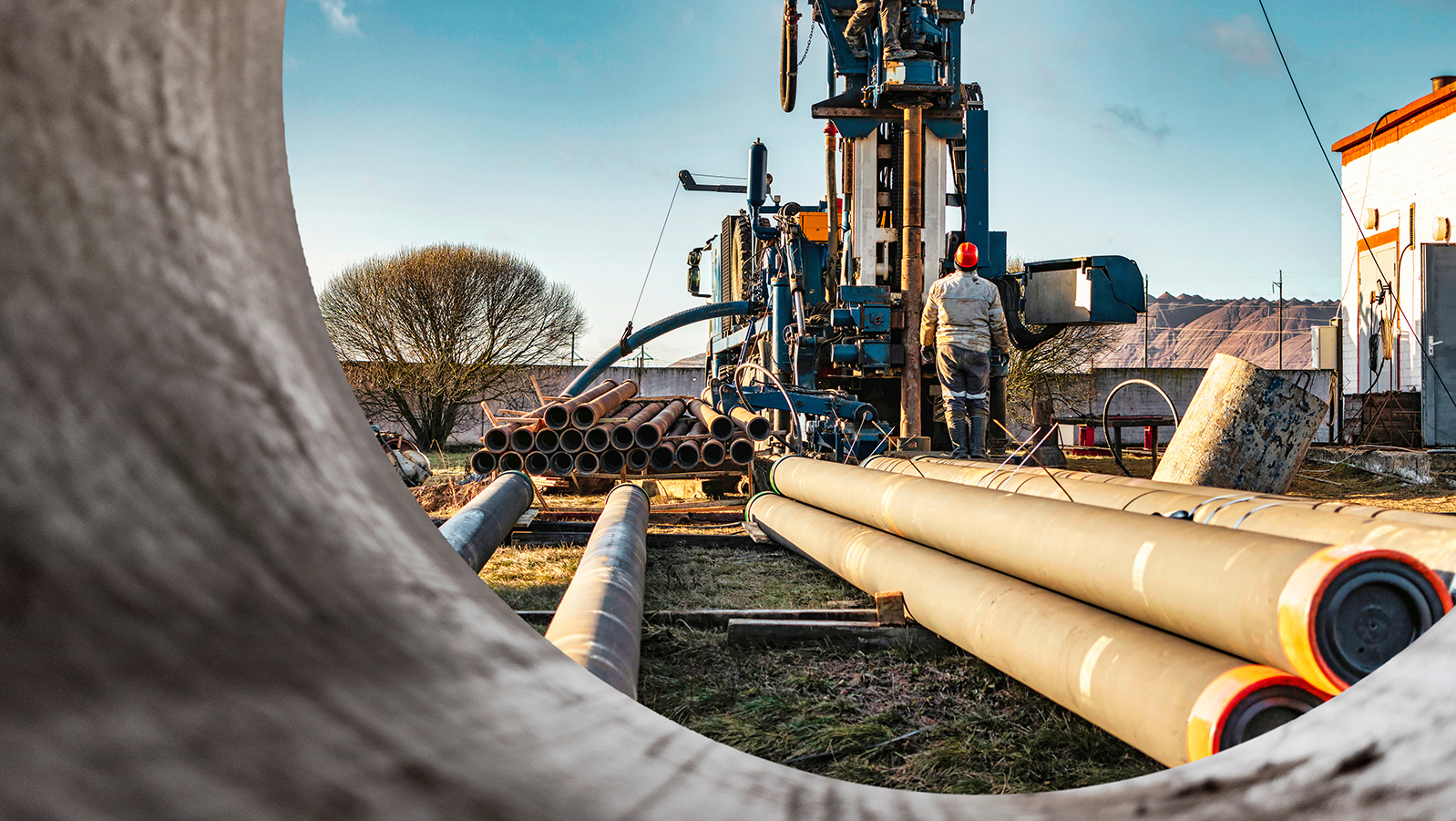Abigail Snyder
Consultant

Geothermal energy projects are breaking ground around the world as part of our societal pursuit for cleaner and more reliable energy sources. An often-overlooked issue with geothermal energy is the excess noise generated during the well-drilling process. This noise can be disruptive to not only nearby community spaces and residences, but sensitive facilities or laboratories and local wildlife. With projects that plan to use hundreds of wells and drilling constructions expected to last up to 6 months, it is important to explore solutions to mitigate the impact of drilling noise during these long construction periods.
Geothermal well drilling, much like any other type of subterraneous drilling, requires the use of various heavy machinery, high-pressure pumps, and large auxiliary equipment, all of which generate excess noise. There are three popular geothermal drilling methods: cable tool, rotary, and air-hammer. Each method has various strengths and weaknesses when it comes to taking on different soil types, maintaining cost efficiency, mobilizing around sites, and even producing noise.
There is no catch-all solution to geothermal drilling noise, as each project faces different conditions both above and below the surface. However, these various noise mitigation strategies can be applied to some degree in most drilling sites:
To provide an example of how noise barriers can help in mitigating drilling noise, we created a model using Datakustik’s CadnaA environmental noise prediction software. We built a model of a mud rotary drill rig with and without noise barriers in place. This model’s sound source levels were informed by real field measurement data from an ongoing geothermal drilling project for which we monitor noise conditions. This project is in a parking lot adjacent to many sensitive receivers including labs and residential properties. The local municipality defines “excess noise” as that being 5 dBA or greater above the typical ambient noise level at the property line. For this site, that meant a property line limit of 70 dBA. The rig was located roughly 50 feet from the property line during operation.
Figure 1 shows a simplified sketch of the modeled mud rotary rig with the most significant noise-producing equipment in orange linework. On this project, a 10-foot temporary noise barrier was placed around the front of the carrier truck around the noisy compressor and cooling equipment. This barrier consisted of industrial soundproofing blankets mounted on chain-link fence. Figures 2 and 3 show the sound level contours around the rig without and with the barrier, respectively.
The model shows a 5 to 10 dBA reduction resulting from the temporary noise barrier around the noise-producing components. Our field measurements of sound level at the property line supports these model results. For this site, the 10-foot noise barrier was successful in maintaining 70 dBA at 50 feet.



While geothermal energy offers significant benefits in terms of sustainability and reliability, managing the noise generated during well drilling is crucial for minimizing its impact on communities, sensitive facilities, and the environment. By adopting quieter technologies, implementing noise reduction measures like barriers, and optimizing drilling practices, stakeholders can address the challenges associated with noise pollution effectively. As the geothermal industry continues to grow, prioritizing noise management will contribute to more harmonious and sustainable energy development.